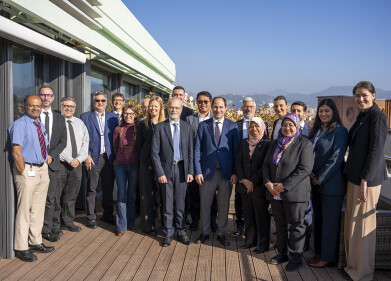Air clean up
Is There a Link Between Pollution and Diabetes?
Aug 26 2017
A team of researchers from the University of Leicester and various other organisations have conducted a study into the potential link between poor air quality and an increased incidence of type 2 diabetes.
By cross-referencing the number of diabetes sufferers against their demographics and exposure to air pollution, the study was able to positively establish a link between the two. However, the authors have stressed that more research is necessary to fully understand this connection.
The method
The paper, which was published in the journal Environmental International, was a joint venture between scientists from various departments in the University of Leicester and air quality monitoring organisation EarthSense.
The researchers screened 10,443 diabetes sufferers in Leicestershire, analysing levels of particulate matter 2.5 (PM2.5) and nitrogen dioxide (NO2) within a 1km2 radius of their home. They also took into account the abundance of green spaces within the same area.
To avoid arriving at a false conclusion, the researchers also recorded each participant’s age, gender, geographical location, social class and tendency to smoke, as well as level of physical activity and body mass index.
The results
Before extrapolating the results of the study to include the participants’ demographical information, there was a clear and definite link between air pollution and a higher risk of contracting type 2 diabetes. However, once their weight, physical activity, gender and other criteria had been factored in, the correlation dropped off.
As a result, the scientists believe that the study ultimately proved inconclusive, with the link between the two phenomena potentially explained away by demographic factors. However, the authors stressed the need for the introduction of measures aimed at improving air quality and reducing transport related pollution, especially in cities.
“The UN has estimated that two thirds of world’s population will be living in cities by 2050 and our cities must become better, healthier places in which to live,” explained Dr Gary O'Donovan, lead author on the study. “Cities like Copenhagen in Denmark and Medellín in Colombia are doing a much better job of measuring air pollution and facilitating active transport than most cities in the UK.”
What next?
Both air pollution and diabetes are already huge areas of concern. The former is said to affect more than 90% of the world’s population and claim in excess of three million lives prematurely each year, while the latter kills roughly the same amount and affects 1 in 16 Britons as of the latest count.
Though the study uncovered some evidence linking the two, the authors stressed that more research was needed. “We will continue to apply cutting-edge air quality research to unpick potentially connected long-term exposure factors,” assured Professor Roland Leigh, co-author on the paper. “As innovators in air quality monitoring, the University of Leicester and EarthSense have fundamental contributions to make to the understanding of the complex issues of pollution exposure and health.”
With air pollution being linked to such diverse health complications as autism and premature aging, it’s clear that something must be done to curb our pollutant habits – both for the sake of the environment, and for ourselves.
Events
Feb 05 2025 Nantes, France
Feb 16 2025 Kampala, Uganda
Feb 26 2025 Chennai, India
Feb 26 2025 Tulsa, OK, USA
WATERTECH CHINA (GUANGDONG) 2025
Mar 05 2025 Guangdong, China












